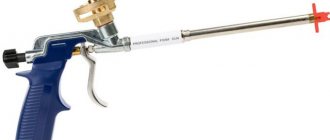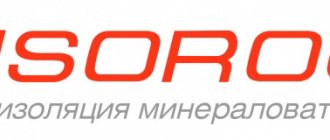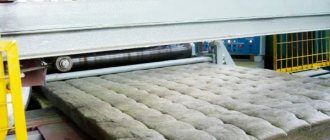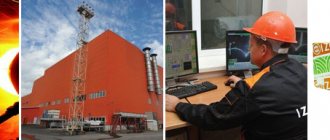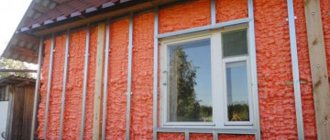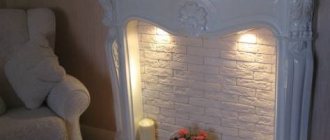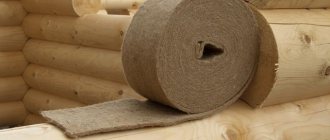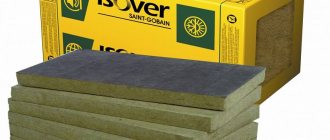Pros and cons of polyurethane foam
Advantages
Judging by the reviews and technical properties of polyurethane foam, we can highlight a number of advantages that this insulation material has:
- When treating the surface with polyurethane foam to insulate it, no seams or cracks are formed. As a result, the heat loss coefficient is much lower than that of boards made of extruded polystyrene or other similar material.
- Judging by the reviews of both experts and ordinary owners of buildings with such treatment, polyurethane foam for insulation provides excellent sound insulation.
- In most cases, a 50 mm layer of polyurethane foam is enough to provide high-quality thermal insulation.
- Transporting the substance is much cheaper than slabs. It's all about the compactness of both the installation and the material.
- PU foam can be used at temperatures from -150 to +220 degrees Celsius. Therefore, it can be used in construction anywhere in the world. Moreover, scientists actively use this substance in the creation of aerospace technologies.
- The use of material allows you to significantly strengthen the roof.
- High thermal inertia allows polyurethane foam for insulation to retain heat indoors even in the strongest winds. This is evidenced by numerous reviews from home owners from cold regions.
- Polyurethane foam has a low water absorption coefficient. It is not surprising that it is often used to create reliable waterproofing. Thanks to this property, the substance has found wide use in roofing.
- When applying polyurethane foam, special equipment is used. A significant part of it is the gun, with which you can regulate the spraying speed. This greatly speeds up installation and makes it more economical, at least that’s what reviews say.
- The substance has high heat resistance and biological neutrality. It is safe for both the environment and humans, but spraying must be carried out with a mask and goggles. Otherwise there may be serious consequences. As you can see from the reviews.
- The service life of polyurethane foam for insulation can reach 50 years.
According to reviews and expert opinions, polyurethane foam insulation has many advantages. If we talk about those that gave it a key advantage in the market, then it is the speed of installation and ease of transportation.
Separately, we need to talk about the benefits that industrial facilities receive. Take, for example, grain storage and vegetable storage. These objects are often susceptible to attack by rodents and insects. But the biological properties of polyurethane allow it to be an insurmountable obstacle for the former and the latter.
Flaws
Unfortunately, despite its more than outstanding advantages, polyurethane foam insulation has its drawbacks:
- The material is vulnerable to ultraviolet rays. Under their influence, accelerated destruction of the structure is observed. However, you can find out about this from the reviews.
- It is not recommended to use polyurethane when it is necessary to insulate a roof consisting of corrugated sheets or metal tiles. The fact is that due to the lack of a gap, condensation begins to form. As a result, the roof surface is destroyed. But reviews on this issue largely contradict each other.
- The price of the material itself is not that low. Moreover, to spray it you will need to rent or purchase special equipment.
At first glance, polyurethane foam, which is used for insulation, has much fewer disadvantages than advantages. But it's not that simple. Judging by the reviews, most of the disadvantages of this substance are leveled out or quite easily eliminated.
Take, for example, rapid deterioration under ultraviolet light. It is enough to take paint and apply it to polyurethane for insulation, so that the service life of the substance will be extended for several decades. Moreover, there are other alternative methods of protection. Suffice it to recall at least plaster.
Now regarding the price. If calculated in cubes, then polyurethane foam for insulation requires significantly less than the same extruded polystyrene. On average, savings are about 20 percent. If we remember the reduction in transportation and hiring costs, the level of savings will be even higher.
The fact is that if you use polyurethane foam for insulation, then judging by the reviews, you can handle an area of 400 square meters in about 8 hours. If you process it using extruded polystyrene slabs, you need at least three days. This is taking into account that about seven workers with appropriate qualifications will work for you.
This is exactly how many workers, if you look at the reviews, are needed to complete the work in the shortest possible time. In turn, one person can handle spraying polyurethane foam for insulation. Reviews also testify to this.
Technical characteristics of polyurethane foam
Judging by the reviews, PPU insulation has both its pros and cons. Fortunately, all of them can be eliminated if you take the right steps. But for this to become possible, it is necessary to understand in detail the technical properties of the material.
All polyurethane can be divided into hard and soft. For construction work, in most cases the first one is used, judging by the reviews. It is excellent for insulation and at the same time is resistant to various types of mechanical influences.
Judging by reviews, one of the important technical properties of the material is corrosion resistance. Moreover, polyurethane foam does not allow water to pass through and is able to withstand the influence of aggressive chemical environments.
It is necessary to learn about the thermal conductivity of polyurethane foam for insulation from specialized literature, and not from reviews. This parameter directly depends on the size of the cells that make up the basic structure of the substance.
Attention! The thermal conductivity of polyurethane foam ranges from 0.02 to 0.04 W/m.
This is a good indicator if you need to insulate a room. This is evidenced by numerous reviews. It is enough to look at expanded clay to understand how high the performance of polyurethane foam is. The thermal conductivity of expanded clay is about 0.14 W/m. For foam glass it is even higher. Even mineral wool cannot compare with polyurethane foam.
The ability to absorb sounds depends on several parameters:
- elasticity,
- bandwidth,
- thickness.
Separately, it is necessary to mention the damping properties. This information is also confirmed by reviews of professionals who have been insulating rooms and houses using polyurethane foam for many years.
Advice! You consider polyurethane foam of the semi-elastic type to be the best for noise protection.
Separately, it is necessary to talk about the properties of polyurethane foam, which appear upon contact with chemicals. According to expert reviews, polyurethane foam cannot be destroyed even by caustic chemicals. Moreover, it can easily withstand the influence of gasoline, oil, plasticizers, alcohol and acid.
Another important property of polyurethane foam, based on reviews, is the protection of metal from corrosion. It is enough to apply polyurethane foam to the metal, and you will not only receive high-quality insulation, but also protect the building from destruction.
An important property of polyurethane foam for insulation, judging by reviews, is low moisture absorption. The performance of this material is impressive. During the day, the structure will not retain more than three percent moisture. This is a good indicator.
Attention! The higher the density of polyurethane foam for insulation, the lower its water absorption. However, you can find out about this from the reviews.
Disadvantages of polyurethane foam, reviews
Reviews and practice of application most often provide the most objective assessment of insulation. Usually, users are primarily interested in the shortcomings of materials in order to find out what awaits in the future and whether money will be wasted. Each material has its own characteristics, which can also be considered disadvantages; polyurethane foam is no exception.
Which insulation to prefer
Choosing insulation often becomes an overwhelming task for the consumer. There are too many technical nuances that are not obvious at first glance. The heat insulator is specified in the project, but it is difficult to solve the problem on your own.
Every insulation product has disadvantages, which the developer is not aware of or has a false idea due to advertising. For example, the durability of materials, about which very contradictory data are given in different sources, cannot be considered an advantage for many materials.
The eternal question of what to give preference to is best solved by acquiring ready-made reviews, operating experience... Or acting according to the approved documentation...
What is polyurethane foam?
Polyurethane foam is synthesized directly on the construction site by mixing complex components using special equipment. Therefore, insulation services with this material are provided only by organizations with special equipment. Independent use of polyurethane foam is impossible.
As a result of the constant slight expansion of the foamed substance and its hardening, a material with a porous structure is formed, 90 - 95% of the volume consisting of voids in the cells. But the characteristics are unique - the highest degree of thermal insulation among artificial materials. At the same time, the price is moderate. Specific costs for very large volumes are low, i.e. over large areas the material also becomes advantageous.
Individual disadvantage
But the creation of polyurethane foam occurs every time without standards, “like an uncle twisting a pen.” This also entails its big drawback - the characteristics will completely depend on the desire of the creator, his conscientiousness, the quality of the equipment, the quality of the components...
The most important parameter is achieving the design specific gravity - kg/m3. Strength characteristics, thermal insulation coefficient, vapor permeability will depend on this... But the creators want to fill the volume and spend as few components as possible….
Therefore, one of the most important indicators of this material is simply consumer reviews of a particular organization involved in spraying. To avoid negative consequences, independent technical control at the construction site is also important.
Afraid of the sun
The effect of ultraviolet radiation on most synthesized plastics is negative. Irradiation destroys chemical bonds and the structure of the material. Users comment on the shortcoming - “the material turns yellow and shrinks.”
When coating external surfaces, it is not recommended to keep polyurethane foam in the sun without protection. In any case, manufacturers may not focus on this. But reviews of polyurethane foam speak precisely to the need to protect it from radiation.
Can be used under protective putty or paint. True, external use is questionable due to another disadvantage of the material...
No flat surface
A typical area of application for polyurethane foam is in cavities covered by hinged panels. Or in places that do not need aesthetic evaluation. Why panels that are hung on the sheathing?
Because it is not profitable and difficult to apply a plaster and paint layer on top of the material. A too uneven surface is created. Spraying is done individually, as the master can. And the thickness of the layer is determined by the average result, while in some places it can be +- 2 cm.
Vapor barrier - advantage or disadvantage?
Reviews about polyurethane foam say one thing - it is better not to use it on vapor-transparent materials from the outside. The insulation will block the escape of moisture from wood, from aerated concrete, from expanded clay concrete... It is better to use the material strictly in accordance with the design, where the structures are specially designed, for example, vapor barrier membranes are provided.
Doing it on your own can literally lead to disastrous results for the wall (structure) - water will flow from it. Thus, the property of the material to poorly allow water vapor to pass through itself will turn into a major disadvantage if used ineptly...
Destroys and binds
Expansion during the formation of the structure can also be considered as a disadvantage of this heat insulator. Using these criteria, users usually make reviews about polyurethane foam - for example, “this foam brought down half of my wall, I didn’t expect...”
Indeed, in closed cavities the material can cause trouble - it will rupture the shells. For example, when pumping without rules into the cavity of a three-layer wall behind a brick wall, there is a risk of squeezing out the cladding, collapsing...
On the other hand, the material is designed in prefabricated structures on lathing, in panel houses. Here it not only fills the internal cavity of the panels, creates a heat-insulating shell, but also fastens the outer cladding itself, creating a monolith….
What is the downside in case of fire?
The material does not support combustion, but at a high enough temperature it begins to decompose, smolder, and ignite. At the same time, releasing substances that are not at all useful. It is not recommended to use it from the inside in an open form for fire reasons; it is better to cover the polyurethane foam on top with a fire-resistant shell.
Typically, an application in which fireproof walls made of mineral materials, or panels made of gypsum fiber or cement fiber, are located inside the living space.
What reviews say about the durability of polyurethane foam
One of the most important qualities of materials used inside permanent structures, such as walls, is durability. It’s good if the wall can be easily disassembled and the insulation material can be replaced, as for example in a ventilated façade system with hanging panels on the outside. But if the material is bonded to a supporting frame, as polyurethane foam does, and covered with heavy finishing in wet processes, then its low durability is the main drawback.
All synthesized materials decompose and serve less than natural mineral ones. But is durability really short? As far as one can judge the shortcomings that consumers leave reviews about, they do not consider this a disadvantage of the material. Those. Until now, there has been no direct replacement of insulation in terms of service life, its “drying out and crumbling”. But this is possible only because energy audits of buildings, measurements of the heat transfer resistance of structures, neither during creation nor during the process, are not carried out here, as is done in Europe, for example….
